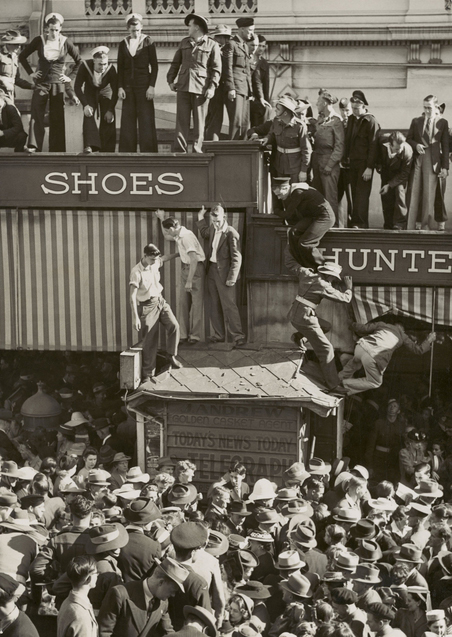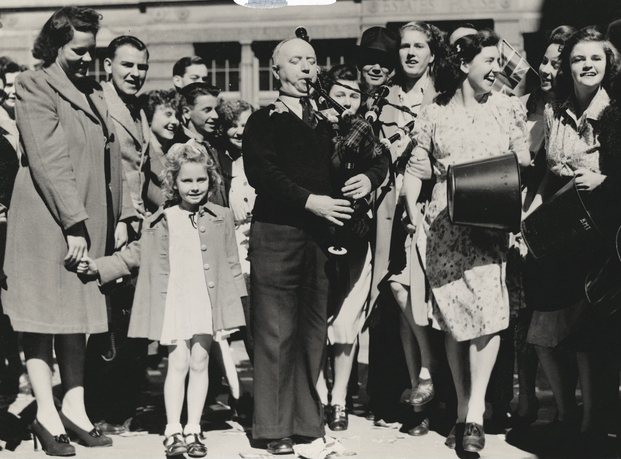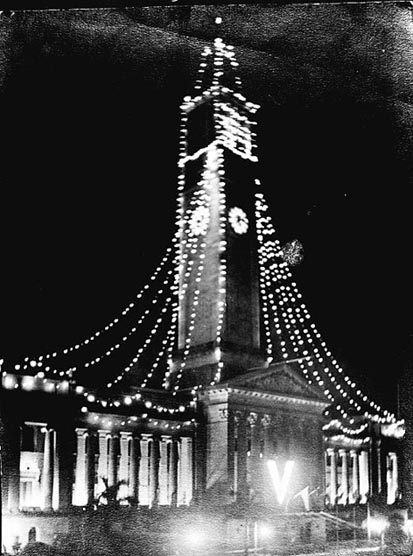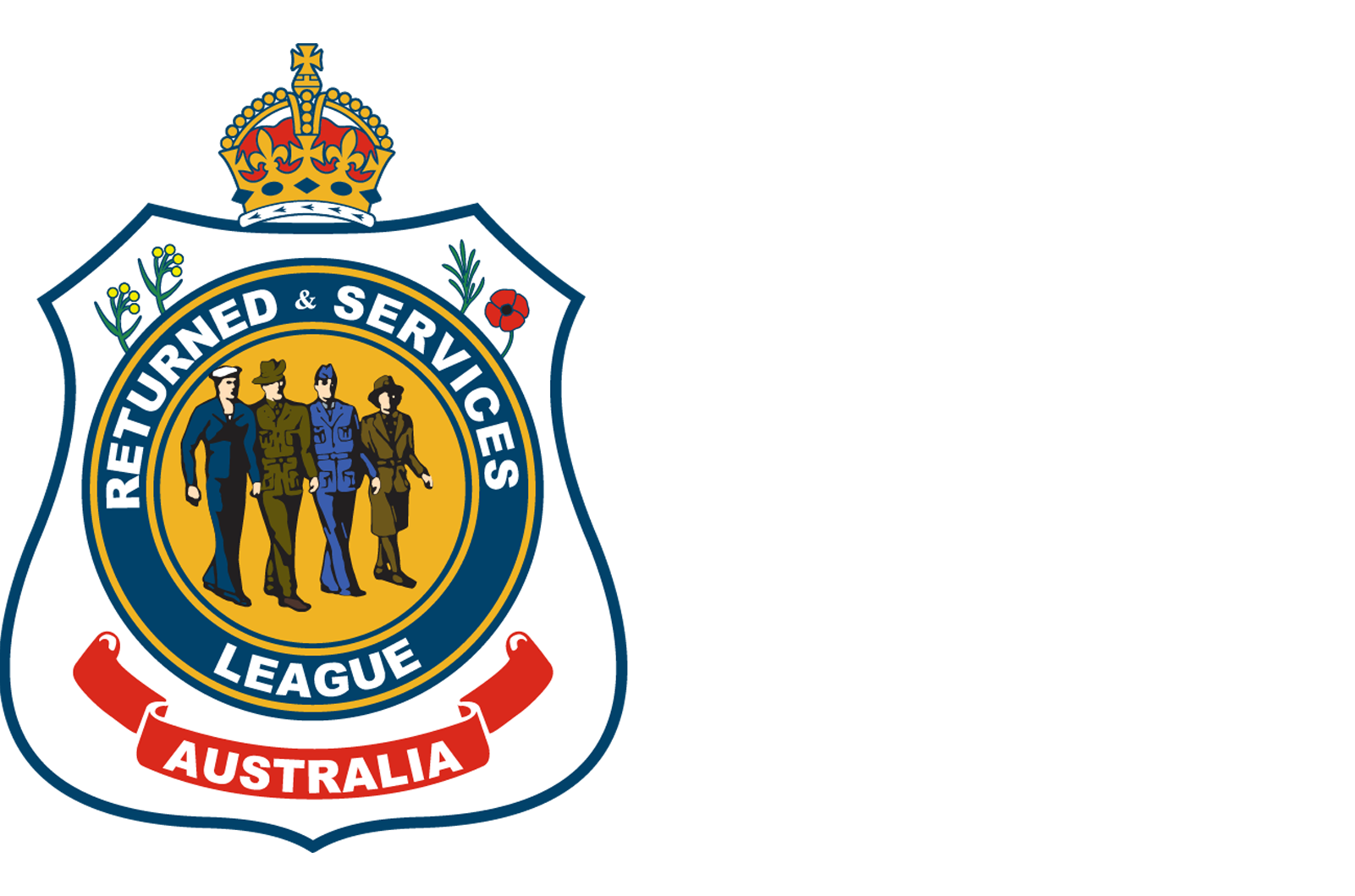15 August 2020
How Queenslanders celebrated Victory in the Pacific
“The war is over… Let us remember those whose lives were given that we may enjoy this glorious moment and look forward to a peace which they have won for us,” said Australia’s Prime Minister Ben Chifley, in his address to the Australian people at the end of the Second World War.
After six years and close to one million Australians serving in our armed forces, Japan’s unconditional surrender brought the war to an end. 15 August 1945 was recognised as VP Day, or Victory in the Pacific Day, in Australia, with celebrations erupting around the country and wherever Aussies were serving at the time.
Celebrations at home
Australia’s government declared VP Day a public holiday and crowds flooded the streets of cities and towns in celebrations that lasted for days.
WWII veteran Bob Lominga recalled the scenes in Brisbane city as people celebrated in the streets: “Oh, they were all going mad... When you go across Queen Street, well, you just imagine what was going on; Queen Street and Mary Street and all those streets there in Brisbane itself. All the excitement, they couldn't get over it.”
Newspapers at the time reported the frolicking, jitterbugging, skipping, flares and confetti as people filled the streets in spontaneous celebration. There were ragtime bands playing, people banging pots, car horns sounding, whistles blowing, soldiers playing two-up, people hugging each other and kissing competitions.
The partying continued into the night when torchlights lit up the streets, and into the days that followed. A Victory March saw 9000 personnel march through the streets of Brisbane to the cheers of 60,000 onlookers; a gala event was held with fireworks; churches held special thanksgiving services; and dancing and singing in the city streets continued.
Celebrations in service
However, for those Australians still in active service, celebrations were much more subdued.
Veteran David Mattiske was serving onboard the HMAS Shropshire in the Subic Bay at the entrance to Manila in the Philippines when word of the surrender broke. But it’s the events that led up to the surrender that David remembers most.
“On the 6th of August, I can remember very clearly early in the morning, all of a sudden, the TBS – talk between ships – announced that an atomic bomb had been dropped at a place called Hiroshima. And so, we were aware then that this may be the end of the war,” said David.
“Then we heard about the second bomb. And there was a sense of relief because we were already fairly certain of where we were going to do the bombardment and landings in Japan. And we found out later that we were right.”
The Shropshire sailed on to Japan and arrived in Tokyo Bay on 31 August ahead of the signing of the Japanese Instrument of Surrender, which took place on 2 September.
“Actually, it was a very interesting situation. At first, the intimation was that there would be a signature by the British Admiral on behalf of the Commonwealth, but the government in Canberra said, ‘No, we as combatants are going to sign in our own right.’ And General Sir Thomas Blamey had been flown into Tokyo and so he signed on behalf of Australia,” said David.
For veteran Joe Treers, who was onboard the HMAS Whang Pu, the celebrations started onboard and continued when they docked in Townsville.
“When it actually happened, we were at sea at the time. So, there was just a celebration amongst the crew. That was all. And then we got to Townsville, and we went ashore and went up to the pub and we couldn't get a beer because they had no glasses,” recalled Joe.
“(One of Joe’s fellow servicemen) went away and he came back with three empty beer bottles. So I went back to the ship, put hot wire across the top of the bottle and then plunged it into freezing water. And this cracked the top of the bottle off. Then I ground the edge and we had three of them. And that’s how we got our beer.”
For many who continued serving – like Joe, who served until 1960 – the celebrations of the end of the war were short-lived as they got on with their jobs.
A celebration of peace
VP Day was as much a celebration of the end of the war as it was about impending peace.
Japan’s formal surrender occurred onboard the USS Missouri in Tokyo Bay on 2 September 1945. However, it took a number of years for life to return to a sense of normality in Australia.
In his address to the Australian people following the end of the war, Prime Minister Ben Chifley called on all Australians to continue working together for the good of the country:
“Here in Australia there is much to be done. The Australian government which stood steadfast during the dread days of the war will give all that it has to working and planning, to ensure that the peace will be a real thing… Let us join together in the march of our nation to future greatness.”




